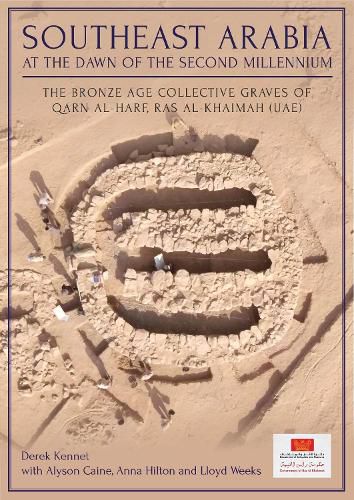Readings Newsletter
Become a Readings Member to make your shopping experience even easier.
Sign in or sign up for free!
You’re not far away from qualifying for FREE standard shipping within Australia
You’ve qualified for FREE standard shipping within Australia
The cart is loading…






The end of the 3rd millennium was a time of significant transformation in south-east Arabia (the United Arab Emirates and northern Oman). The cultural homogeneity of the preceding Early Bronze Age, Umm an-Nar period (c. 2700-2000 BC) came to an end and gave way to the Middle Bronze Age, Wadi Suq period (2000-1600 BC). Settlements changed, and possibly began to decline in size and number, the economy changed for many and the important trade in copper ore seems to have declined. In addition, there was a marked change in funerary practices as new types of tombs appeared - both collective and individual burials. All of this took place within the context of a climatic shift that led to a decline in rainfall across many parts of the region. Much of the countryside of south-eastern Iran was abandoned and the urban period of the Indus Valley was weakening. In the midst of this turmoil, the limited agricultural plains of northern Ras al-Khaimah appear to have developed into an island where there was greater continuity than elsewhere. This book reports on the excavation of a number of monumental collective tombs that were built there and used through the early part of the 2nd millennium. The way that they were constructed and used as well as the burial goods that they contain throw light on the population of this area, and give some indication of how and why it was that life continued in this small pocket in a way that was different to surrounding regions.
$9.00 standard shipping within Australia
FREE standard shipping within Australia for orders over $100.00
Express & International shipping calculated at checkout
The end of the 3rd millennium was a time of significant transformation in south-east Arabia (the United Arab Emirates and northern Oman). The cultural homogeneity of the preceding Early Bronze Age, Umm an-Nar period (c. 2700-2000 BC) came to an end and gave way to the Middle Bronze Age, Wadi Suq period (2000-1600 BC). Settlements changed, and possibly began to decline in size and number, the economy changed for many and the important trade in copper ore seems to have declined. In addition, there was a marked change in funerary practices as new types of tombs appeared - both collective and individual burials. All of this took place within the context of a climatic shift that led to a decline in rainfall across many parts of the region. Much of the countryside of south-eastern Iran was abandoned and the urban period of the Indus Valley was weakening. In the midst of this turmoil, the limited agricultural plains of northern Ras al-Khaimah appear to have developed into an island where there was greater continuity than elsewhere. This book reports on the excavation of a number of monumental collective tombs that were built there and used through the early part of the 2nd millennium. The way that they were constructed and used as well as the burial goods that they contain throw light on the population of this area, and give some indication of how and why it was that life continued in this small pocket in a way that was different to surrounding regions.